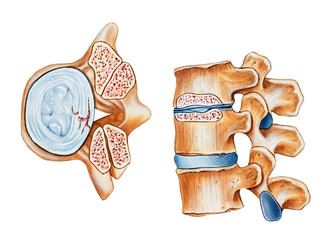Spinal stenosis is a common condition caused by the narrowing of the spinal column, usually in the neck or lower back. The spinal column contains sensitive nerves, tissue, and the spinal cord, so this condition can cause serious pain throughout the entire back. If the narrowing is minimal, though, you may not feel symptoms at all. This condition occurs mostly in adults 50 and over, as natural aging is the most common cause.
Symptoms
Common symptoms of spinal stenosis include:
- Aching or numbness in the legs
- Loss of balance
- Weakness in the arms or legs
A more serious, yet rare, symptom is the loss of bowel and bladder control. If you are experiencing serious, ongoing symptoms, consult with your doctor. Spinal stenosis is usually diagnosed through a physical examination, X-rays, an MRI, or a CT scan.
Treatment
If you’re in the early phases of spinal stenosis, you have many treatment options. The following can be helpful:
- Anti-inflammatory and/or pain relief medications. Over-the-counter drugs such as aspirin, ibuprofen, and acetaminophen can provide temporary pain relief.
- Cortisone injections. These pain-relieving injections go straight into the area around the spinal column, this is an epidural injection.
- Physical therapy. This can help strengthen and stretch muscles in the back and abdomen.
If spinal stenosis is untreated, it can get progressively worse and cause symptoms to become permanent.
While the majority of people with spinal stenosis do not need surgery, it’s an option for those with severe cases.
If you’re experiencing a serious loss in daily functioning, surgery is recommended. Severe spinal stenosis can cause extreme pain and even permanent nerve damage. Surgery for these issues can relieve the pressure in the spinal column and alleviate pain permanently.


